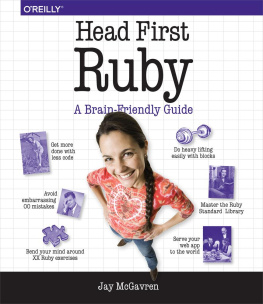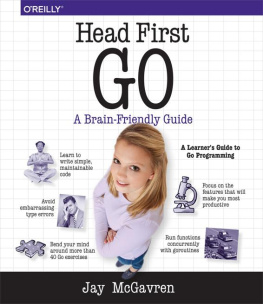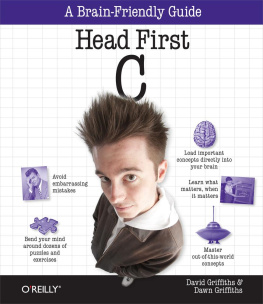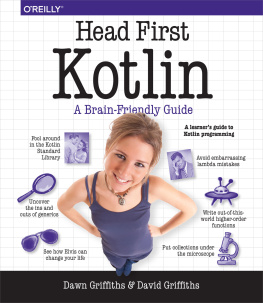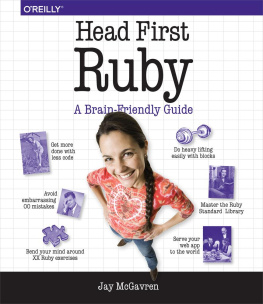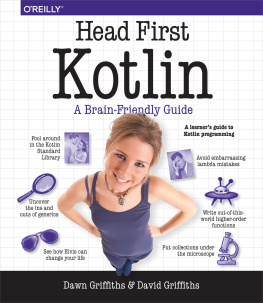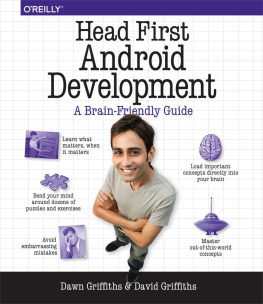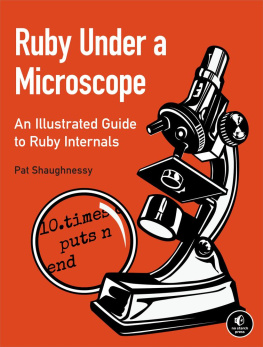Jay McGavren - Head First Ruby: A Brain-Friendly Guide
Here you can read online Jay McGavren - Head First Ruby: A Brain-Friendly Guide full text of the book (entire story) in english for free. Download pdf and epub, get meaning, cover and reviews about this ebook. year: 2015, publisher: O’Reilly Media, genre: Home and family. Description of the work, (preface) as well as reviews are available. Best literature library LitArk.com created for fans of good reading and offers a wide selection of genres:
Romance novel
Science fiction
Adventure
Detective
Science
History
Home and family
Prose
Art
Politics
Computer
Non-fiction
Religion
Business
Children
Humor
Choose a favorite category and find really read worthwhile books. Enjoy immersion in the world of imagination, feel the emotions of the characters or learn something new for yourself, make an fascinating discovery.
- Book:Head First Ruby: A Brain-Friendly Guide
- Author:
- Publisher:O’Reilly Media
- Genre:
- Year:2015
- Rating:3 / 5
- Favourites:Add to favourites
- Your mark:
Head First Ruby: A Brain-Friendly Guide: summary, description and annotation
We offer to read an annotation, description, summary or preface (depends on what the author of the book "Head First Ruby: A Brain-Friendly Guide" wrote himself). If you haven't found the necessary information about the book — write in the comments, we will try to find it.
What will you learn from this book?
Whats all the buzz about this Ruby language? Is it right for you? Well, ask yourself: are you tired of all those extra declarations, keywords, and compilation steps in your other language? Do you want to be a more productive programmer? Then youll love Ruby. With this unique hands-on learning experience, youll discover how Ruby takes care of all the details for you, so you can simply have fun and get more done with less code.
Why does this book look so different?
Based on the latest research in cognitive science and learning theory, Head First Ruby uses a visually rich format to engage your mind, rather than a text-heavy approach to put you to sleep. Why waste your time struggling with new concepts? This multi-sensory learning experience is designed for the way your brain really works.
Jay McGavren: author's other books
Who wrote Head First Ruby: A Brain-Friendly Guide? Find out the surname, the name of the author of the book and a list of all author's works by series.

